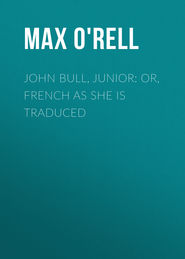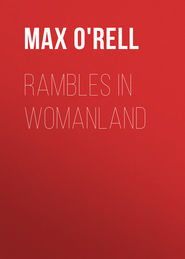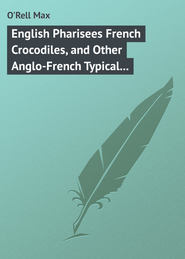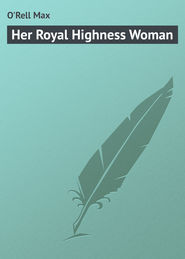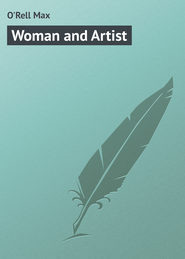По всем вопросам обращайтесь на: info@litportal.ru
(©) 2003-2024.
✖
Friend Mac Donald
Настройки чтения
Размер шрифта
Высота строк
Поля
Edinburgh has a population of 350,000 inhabitants, including the sentry at Holyrood Palace.
According to d'Anville, the city stands on the site of the Roman station of Alata Castra. Towards the year 626 the fortress became the residence of Edwin, King of Northumbria, who gave it his name.
The old city was entirely destroyed by fire in 1537. That which now bears the name of old town dates from the end of the sixteenth century and the beginning of the seventeenth.
The modern part of Edinburgh was begun at the close of last century, and the handsomest streets are of a quite recent date.
A tout seigneur tout honneur. Let us commence our inspection by a visit to Holyrood Palace.
I should like to transform this little volume into a guide-book, and give you the history of all the houses we are passing, as we go through the old town, for almost every one has its history. There on your left is the house of John Knox, with its flight of steps, its overhanging stories, and, over the door, the inscription, "Love God above all, and your neighbour as yourself." Here is the house where Cromwell decided on the execution of Charles I.; there Hume and Smollett wrote history.
At the end of Canongate, the prolongation of High Street, we come out on a large open square. The palace of Holyrood is before us.
Standing in a hollow, and surrounded by high hills, the aspect of the palace is most sombre. From the moment you cross the threshold, a thousand sad thoughts assail you. You are in the home of Mary Stuart. Everything speaks to you of her. Her sweet, tragic face, her noble presence, her thoughtful brow – you see all again in these halls instinct with her souvenir. They haunt the place as they still haunt the memory of the Scotch. In spite of her bigotry, in spite of all the crimes historians have imputed to her, the Scotch cherish her memory, think only of her misfortunes and sufferings, and will not hear you speak of her with anything but respect. One may easily imagine the ascendency which this woman must have had over those who came in contact with her.
But let us go in, and first we must get our sixpences ready; for in this country, where l'hospitalité se donne, you must pay everywhere, and on entering too, for fear you may not be pleased when you come out: to avoid misunderstandings, as the Scotch put it.
On the first floor we enter the picture gallery. It is here that the Scotch peers are elected. The room contains portraits of the Scottish kings, from Fergus I. to James VII. At the end of it we find a door which leads to the apartments occupied by the unfortunate princess. Small windows throw a feeble light on the sombre tapestries; though the day is fine, it is difficult to distinguish the various objects of furniture. There is an air of mystery about the place. Poor Mary! After the gay French court, what a tomb must this palace have seemed! Between two windows is a little mirror that must often have reflected back the image of that beautiful countenance, stamped with sadness, the fair head that was one day to roll at the feet of the executioner. Close by, a portrait which must be a libel on so gracious an original. At the two extremities of the bedroom two little closets – I had almost said, cells – formed in the towers which overhang from the outside. The one on the left is the dressing-room; that on the right the supper-room. Near the latter a door leads to the secret staircase. You can reconstruct for yourself the scene of the murder of the favourite Italian secretary, who paid with his blood for the honour of having now and then cheered the heart of the queen with his songs. On the floor of the audience-room you are shown the stains of the unhappy Rizzio's blood. It was here, too, that Chastelard, grandson of Bayard, declared his love to his royal mistress, whom he had accompanied to Scotland on her departure from the French court. Poor Chastelard! he, too, payed with his life for the love which the enchantress had inspired in him, not for this first declaration, which was forgiven him, but for a graver offence, committed at Rossend Castle, of which I shall have occasion to speak presently.
A visit to Holyrood always leaves a painful impression. It is the temple of misfortune, and I can understand Queen Victoria's preference for the bright breezy Highlands.
On our return through Canongate and High Street, we shall come to the Castle. Without going much out of our way, we can go and see the Parliament House and the University; but first, let us go to the summit of Arthur's Seat, a hill eight hundred and twenty-two feet high, situated behind the Palace of Holyrood. The ascent is not difficult, and the magnificence of the panorama that meets the eyes is beyond description.
The House where the Scotch Parliament met before the union of the Scotch and English Crowns, is now transformed into Courts of Law. This building is interesting not only on account of the souvenirs it evokes, but also on account of the hopes it keeps alive in the hearts of the Scotch. Before many years have elapsed, the representatives of Scotland will probably sit there to manage the local affairs of the nation.
Edinburgh University, which dates from the year 1582, is the finest edifice of the kind in Europe: two hundred and fifty-five feet long, by three hundred and fifty-eight broad. A library of one hundred and fifty thousand volumes (sixpence entrance). Rare manuscripts. Magnificent lecture rooms. Over three thousand students work under most eminent professors.
Facing the University is the Museum of Arts and Science. For a list of the innumerable treasures it contains, I must refer the reader to guides to Scotland.
The Royal Infirmary, with its numerous buildings, in the midst of which rises a tower thirty-three feet high, arrests our attention a few moments. From here we can turn down High Street to admire the Cathedral of Saint Giles, so full of souvenirs of the Reformation, and then continue our course up the great street of the old city, as far as the famous Edinburgh Castle, a feudal edifice standing on the summit of a perpendicular rock, from whence you can survey the old and new towns.
The Crown Room contains the insignia of the Scottish sovereigns. Close to it is the room where Mary Stuart gave birth to the son who was to unite the crowns of England and Scotland. In this rapid glimpse of Edinburgh, it would be out of place to enter into all the history of the Castle, the sieges it has stood, and so on. Historical castles all resemble each other a little; but that which makes the interest of this one unique is its marvellous position: the sixteenth century at your right; the hills and the sea beyond; on your left, the parks; in front, nearly four hundred feet below you, the beautiful modern town, with its elegant buildings, straight, wide streets, and its statues; a little in the distance, Calton Hill, with its Greek monuments; beyond again, Leith with its harbour bristling with masts; you are chained to the spot in admiration.
Following the castle terrace, we will descend towards the new town, and come out at the west of Princes Street.
We are walking towards the East. On our left, we shall have the shops; on our right, the public gardens, a mixture of Boulevard des Italiens and Champs Elysées. Everything here is in perfect taste. Look at the statues judiciously placed about the public gardens, streets, and squares!
O George Square!
Here is a shop-window full of photographs. Let us stop and look in: they are not portraits of actresses and fashionable beauties, but chiefly of professors of the University, of which Edinburgh is so proud. Remarkable among them is Professor Blackie, his fine head recalling a likeness of Lizst. It was this same Professor Blackie on whom the people of Glasgow made such an attack about two years ago, for having given, one Sunday in Saint Andrew's Hall, a most charming and poetical discourse on the Songs of Scotland.
The sweep of the public gardens on the right is agreeably broken by two specimens of the most elegant Greek architecture: they are the buildings of the Royal Institution and the National Gallery. Nothing could be more graceful, more Attic, than these twin structures. The first contains thousands of national relics, from the pulpit of Knox to the Ribbon of the Garter worn by Prince Charles Stuart. The second is an admirable museum of painting and sculpture.
The most striking monument of Princes Street is the one which was erected to Walter Scott in 1844. It has the form of a Gothic steeple, and is not less than two hundred feet high. It resembles somewhat the Albert Memorial in Hyde Park, but with this difference, that, while designed with ten times as much taste, it cost about a tenth of the money. The novelist's heroes and heroines are gracefully placed in the niches; the author himself is seated in an attitude of contemplation in the midst of his creations. Now for the comic side of the thing. A staircase conducts to the summit of the monument, to which you may mount for the sum of twopence.
On the East of Princes Street are two very fine buildings – the Post Office and the Register Office, or resting-place of the national archives. This latter building has a magnificent flight of steps, in front of which is an equestrian statue – you guess whose, of course: the inevitable, the eternal, the never-to-be-sufficiently-paraded.
What a bore that creature is!
I am quite willing to admit that Wellington did exist, and that he rendered his country service; but is that a reason for turning him into a bore? He is a very nightmare!
Napoleon, surely, was as great a general as Wellington. We have placed him on the top of the Vendome Column, but we had the good taste not to stick him up in every provincial city.
That is true, you will perhaps say; but Wellington saved his country, whereas Napoleon ruined his. That is not my opinion; but we will not argue.
Joan of Arc saved France. We have her statue at Domrémy, where she was born; at Orleans, where she handed over to her king his kingdom; and at Rouen, where she suffered death.
I should understand every Scotch town having a statue of Burns, and another of Scott. These two geniuses personify Scotland; they remind the Scotch that Scotland is a nation, with a literature of her own; they keep up patriotism in every heart. But what did Wellington do for Scotland? If, in 1840, for instance, the Scotch had asked the English to give them their national rights and their parliament, Wellington is probably the general who would have gone to reduce them to order.
But let us say no more about it. We will continue our walk to the end of Princes Street. Here we are at the foot of Calton Hill. By means of flights of steps and paths we pass the Observatory, and reach the top, to see the monument erected to Nelson's memory (threepence entrance).
Between this monument and the Observatory, there stands a reproduction of the Parthenon. This is what chiefly suggested the idea of calling Edinburgh the Athens of the North. Calton Hill does its best to play the part of the Acropolis. But, unhappily, this Parthenon, built to commemorate the victory of Waterloo, remains unfinished for want of funds. It is true that this lends it a ruined look, which does not give a bad effect to the scene. But £20,000 to make a ruin is dear. In that time the Greeks would have sold the Scots the real Parthenon for half the money. Half the money! What am I talking about? for a timepiece. Go to the British Museum and see what Lord Elgin got for a clock: the marbles and frieze of the Parthenon, the bas-reliefs of Phidias, columns from the temple of Diana at Ephesus, the epitaph of the Athenians who died at Potidœa, the bas-reliefs of the temple of Ægina. Lord Elgin was a business-like Scotchman. In 1816 the English bought his collection of him for £36,000. They would not sell it to-day for £500,000.
Going round the Acropolis we will descend near the High School, the most important school in Edinburgh, opposite which stands the monument to Robert Burns (twopence entrance). It is rather insignificant-looking, and reminds one of that erected by the Athenians in memory of Lysicrates. Cost, £2,600.
I pass over many museums and institutions; but I hope I have succeeded in showing that Edinburgh is a place to be seen, and quite repays one for the trouble of a long journey.
And now let us see what kind of people one meets in the streets of Edinburgh. After that, I will ask your permission to take you across the Firth of Forth, and show you a castle little known in England, where I hope we shall be able to pass a little time pleasantly.
CHAPTER XXVIII
Where are the Scotch? – Something wanting in the Landscape. – The Inhabitants. – The Highlanders and the Servant Girls. – Evening in Princes Street. – Leith and the Firth of Forth. – Rossend Castle at Burntisland. – Mary Stuart once more. – I receive Scotch Hospitality in the Bedroom where Chastelard was as enterprising as unfortunate.
With the exception of the famous tartan shawls, which we come across again in Edinburgh on the backs of the lower-class women, nothing in the costume of the inhabitants could remind you that you were not in Paris, London, Brussels, or any other haunt of that badge of modern civilisation, the chimney-pot. In Glasgow this does not shock you more than it would in Manchester or Birmingham; but, in the romantic city of Edinburgh, even the whistle of the railway engine annoys you; the cap and kilt are sadly felt wanting, and you almost want to stop the passers-by and ask them: "Where are your kilts?" You feel as if you were cheated out of something.
Alas! the national costume of the Scotch is almost a thing of the past: it is no longer a dress – it is a get-up.
You may see it yet at fancy dress balls, in the army of Her Britannic Majesty, at the Paris Opera-Comique, and in the comic papers.
I believe the Royal Princes occasionally don it, when they go to Scotland in the autumn to shoot; but even in the remote Highlands the national costume is dying out, and if you count upon seeing Scotchmen, dressed Scotch fashion in Scotland, you will be disappointed. As well look for lions in the outskirts of Algiers, or a pretty woman in the streets of Berne.
A gentleman in kilts would make as great a sensation in the streets of Edinburgh as he would on the Boulevard des Italiens. Nay, more, if he stood still, he might have pence offered him.
The costume of Dickson in La Dame Blanche is only seen on the backs of those splendid Highlanders whom the maidservants in large towns hire by the afternoon on Sundays to accompany them to the parks.
In London you will sometimes see Highlanders – from Whitechapel – playing the bagpipes and dancing reels, talents which bring an ample harvest of pennies in populous neighbourhoods, but which would fall rather flat in Edinburgh.
I cannot imagine anything much more picturesque than Princes Street at night, when the old city in amphitheatre-shape, on the other side of the valley, stands out from the sky which it seems to touch with its old sombre majestic castle, and its houses ten or twelve stories high, rising tier above tier up the side of the hill, and shining with a thousand lights. I can understand that the inhabitants of Edinburgh enjoy to come out in the evening and feast their eyes on the enchanting sight, and this even in winter, when the street is a very funnel for the east wind which blows across straight from the Scandinavian icebergs.
Edinburgh is the only town in Great Britain, which I have visited, whose streets are not shunned by respectable people at night.
A fine road about two miles long leads to Leith, which stands for Piræus to the Scotch Athens. There, in the mud and smoke, dwells a population of sixty thousand toil-stained folk, who contrast strongly with their elegant neighbours of Edinburgh. There is nothing here to attract the eye of the traveller, unless it be the harbour with its two piers – one 3,530, the other 3,123 feet long – where the inhabitants can go and breathe the sea air, away from the noise and smoke of the town.
Along the coast to the west, two miles from Leith, we come upon the interesting village of Newhaven. Here we find a little world apart, composed of fisherfolk, all related one to another, it is said. They treat as Philistines all who did not first see the light in their sanctuary, and the result is that they are constantly intermarrying. All the men work at fishing. The women go to Edinburgh to sell what their husbands catch, and bring back empty baskets and full pockets. These worthy women would think they were robbing their dear village if they bought the least thing in Edinburgh. Needless to say, the little community prospers. To see the costume of the women, who, in no point imitate the ridiculous get-up of their sisters in great towns; to see the activity and zeal for their work, one would believe oneself in France.
"All the skippers own their own boats, and the pretty little houses they live in," said the Scotchman who accompanied me.
And how neat and clean they look, those little white houses covered with climbing plants of all sorts! The whole scene speaks loudly of the work, thrift, and order of the people.






